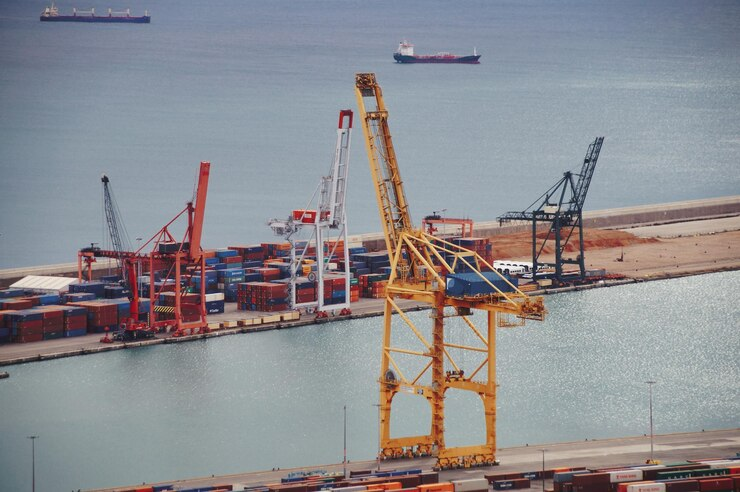Intro
In today’s fast-paced business world, efficient logistics control is essential for the fulfillment of any employer. One key component of present-day logistics is the usage of cross-dock shipments. This way entails the quick transfer of products from incoming to outgoing vehicles with minimum managing and storage time. This weblog post will explore the significance of go dock shipments in streamlining logistics and enhancing last-mile deliveries for groups.
Understanding Last Mile Logistics and Its Importance
Last mile logistics encapsulates the final stretch of the shipping journey, moving merchandise from distribution hubs to their remaining recipients. This phase is notoriously tough because of elements like urban congestion and the need for specific delivery schedules. It’s this segment in which charges can skyrocket, and performance is tested, making it a crucial consciousness for organizations aiming to meet client demands rapidly and accurately. Achieving proficiency in remaining mile logistics isn’t always about overcoming logistical hurdles; it enhances customer pleasure and securing a competitive role in the ultra-modern market.
The Role of Cross Dock Shipments in Streamlining Logistics
Cross dock shipments alter the conventional warehousing version by enabling the quick transfer of goods from inbound to outbound transportation modes without delay. This method significantly reduces or eliminates the need for items to be stored, thereby reducing handling times and associated expenses. It’s particularly nice for merchandise to have a brief turnaround time that must be brought promptly. Through go docking, agencies can enhance the performance of their logistics operations, making the manner leaner and more aware of market demands. This streamlined method not only optimizes the use of warehouse areas for objects but also necessitates longer garages. Additionally, it allows for quicker movement of goods through the supply chain, allowing faster delivery to clients.
How Technology Enhances Cross-Docking and Last-Mile Deliveries
In logistics, technological improvements were pivotal in refining go docking and closing mile shipping operations. Automated structures and complex software program solutions enable unique tracking and management of goods as they transition through pass docking approaches. This minimizes handling times and decreases the danger of mistakes, ensuring a smooth drift from inbound to outbound transportation. Furthermore, for ultimate mile deliveries, technology is important in optimizing routes and coping with patron expectations via real-time updates and shipping scheduling. The integration of these technologies permits for a more cohesive and green supply chain, catering to the immediate needs of the marketplace and elevating customer pleasure. By harnessing these innovations, organizations can beautify their logistics operations’ agility and reliability.
Combining Last Mile Logistics with Cross Dock Shipments for Maximum Efficiency
Merging last-mile logistics abilities with pass dock shipments’ efficiency creates a powerhouse in supply chain management. This synthesis permits businesses to expedite the transfer of goods from distribution centers straight to the transport cars destined for clients, efficaciously reducing transit times and putting off useless delays. By integrating those two components, companies can first-rate-tune their shipping manner, slashing overhead prices and raising operational performance. This approach most effectively streamlines shipping schedules and guarantees that products reach their very last locations in the fastest feasible way. Leveraging this incorporated method allows for a more dynamic and responsive logistics framework to meet the demands of modern-day speedy-transferring marketplace environments.
Future Trends in Logistics Technology
As the logistics industry continues its fast evolution, modern-day technology, which includes drones, self-sustaining motors, and gadgets, getting to know, is set to redefine how corporations control and execute their delivery chain operations. These improvements promise to automate complicated procedures, reduce human error, and improve the delivery rate. For example, drones are being eyed for their potential to execute swift, airborne closing-mile deliveries, especially in congested city regions or far-off locations. Meanwhile, independent cars may want to revolutionize floor transportation, providing spherical-the-clock delivery abilities without the constraints of human drivers. Additionally, the application of device gaining knowledge of and synthetic intelligence is expected to improve call for forecasting, stock management, and optimize delivery routes in actual time. Together, that technology will empower groups to meet consumer expectations for immediacy and precision, marking a new technology in logistical performance and effectiveness.
Optimizing Last Mile Delivery Routes for Faster and Cheaper Deliveries
Optimizing the remaining mile delivery routes is a recreation-changer in lowering operational fees and rushing the delivery process. By employing advanced direction optimization software programs, groups can harness the strength of analytics to devise the most efficient paths for their shipping fleets. This not only slashes the time taken to attain clients but also considerably cuts down on fuel charges, making deliveries extra eco-friendly. Additionally, integrating real-time tracking gear gives the twin gain of dynamically adjusting routes in response to visitors’ conditions and providing clients with correct delivery updates. This logistical precision and performance stage immediately translates to heightened customer satisfaction and loyalty, as recipients receive their orders swiftly and without useless delays. By prioritizing route optimization in remaining mile deliveries, groups function themselves to tackle logistical demanding situations head-on, ensuring they continue to be aggressive in a more and more traumatic marketplace.
Conclusion
Cross docking and final mile logistics have emerged as pivotal factors in refining commercial enterprise supply chains’ efficacy and price effectiveness. Integrating these strategies with superior technological tools propels organizations towards achieving unparalleled efficiency and responsiveness in assembly marketplace demands. This synergy now streamlines the supply chain and extensively elevates patron delight using timely and correct deliveries. As the logistics area evolves with innovative technologies, embracing these adjustments might be important for groups aiming to keep a competitive edge. The destiny of logistics is dynamic, promising a landscape where efficiency, velocity, and consumer-centric approaches power success. By prioritizing pass docking and optimized closing mile deliveries, organizations are prepared to navigate the complexities of the cutting-edge logistics surroundings, securing their place within the competitive market of the day after today.

